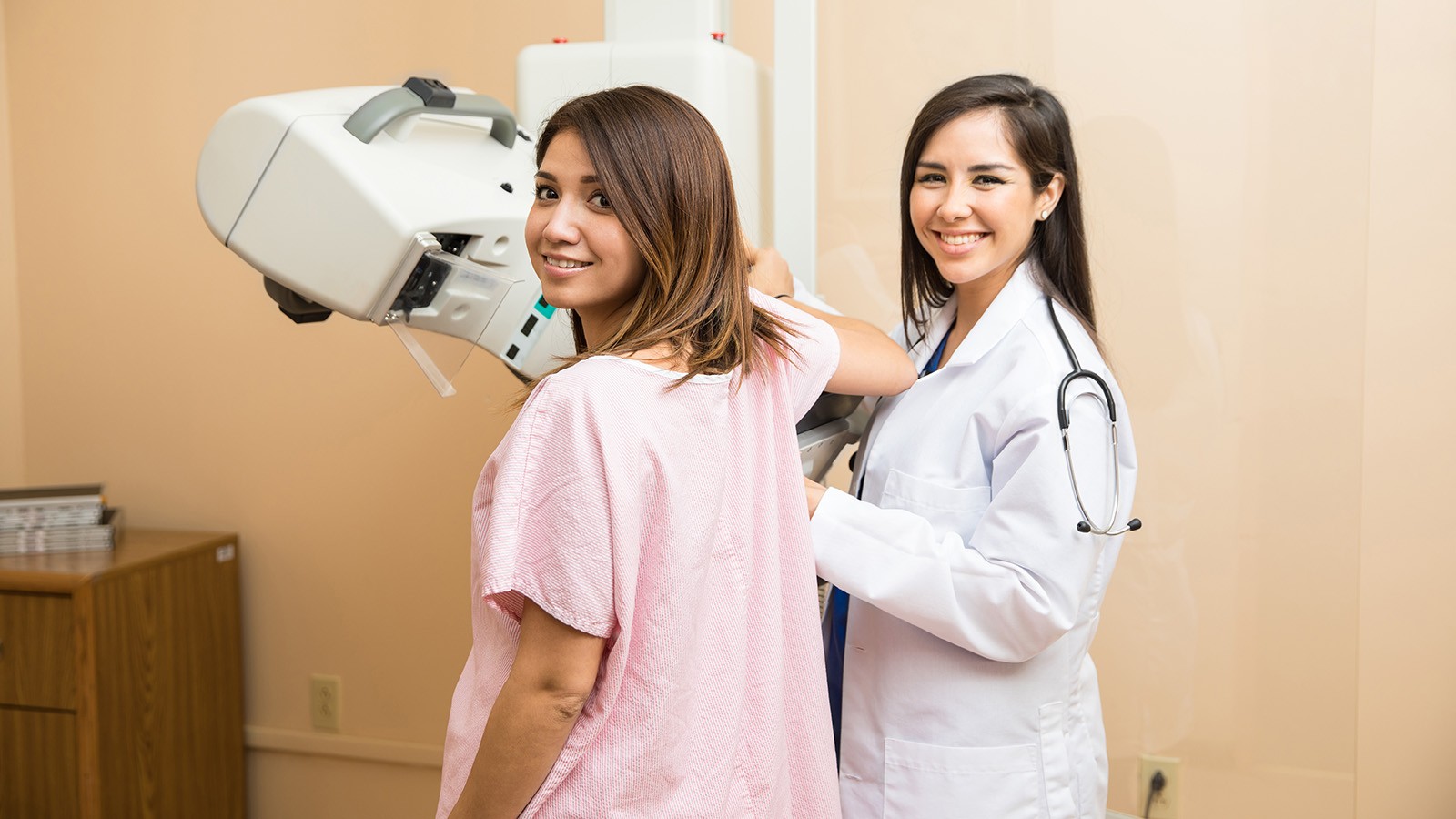Utah Among Three Lowest States for Mammograms, USU UWLP Reports
By Julene Reese |
Breast cancer is the leading cause of cancer death for women in Utah. Mammography has been shown to reduce breast cancer mortality and is a critical screening tool that can increase the chance of early detection and treatment. However, not all women receive screenings according to recommended guidelines, and data from the latest Behavioral Risk Factor Surveillance System survey placed Utah among the three lowest states for breast cancer screening in women 40 years and older. The average screening rate for Utah was 6.3% lower than the 69% average for U.S. women.
The Utah Women & Leadership Project (UWLP) recently updated a mammography research report of 2017, which identified numerous reasons why Utah women might not adhere to screening recommendations, including time constraints, family size, education, level of health literacy, and lack of a primary care provider.
According to Susan Madsen, UWLP founding director, these factors are still relevant in 2023, along with additional factors, including insurance coverage and financial concerns, mammography guidelines, and the impacts of COVID.
“We hope that reviewing past information will help us as we move forward,” she said. “Understanding these factors coupled with education can help Utah women receive this valuable test at higher rates.”
Cost and access to affordable health insurance influence whether individuals receive needed healthcare. A 2019 study suggested that barriers to screening may be unique between different income level groups, even when women have health insurance.
“Women with higher income levels were more likely to list forgetting to schedule an appointment or lack of time as barriers, as opposed to women with lower income, who cited financial difficulty and a lack of screening recommendation from a physician as more common barriers,” said Chloe Bhowmick, clinical psychologist, UWLP research fellow, and lead report author.
Mammography guideline discrepancies are another barrier. Mixed messages about the frequency of mammograms for different ages may cause confusion and impact a woman’s likelihood of scheduling a mammogram.
In addition, COVID-19 significantly impacted routine care and preventative screenings in 2020 and 2021, since many healthcare providers reduced access to non-essential services to ensure capacity for COVID-19 patients.
“Mammography, considered outpatient and non-emergency, saw one of the largest decreases of services,” said Bhowmick. “Fortunately, many medical centers were able to rebound to comparable mammography rates by mid-2020. However, changing employment during the pandemic, such as loss of a job or health insurance, may still influence some women’s ability to receive a mammogram moving forward, and the pandemic may cause subtle but lingering effects on mammography rates.”
Other factors that can deter mammograms include lack of transportation and geographic accessibility, cultural norms, prioritizing work and family obligations, lack of childcare for the appointment, lack of knowledge about mammography, lack of trust in the health care system, concern of pain during the screening, and fear of receiving a diagnosis.
“There are several steps that state and local systems can take to foster increased mammography rates,” said Sadie Wilde, USU Extension assistant professor, UWLP research associate, and a report author. “One step is to have consistent guidelines and goals so women clearly understand how often they should have a mammogram. Also, Utah healthcare and insurance systems can help increase screening rates by building patient advisories into electronic record systems. In addition, employers can implement wellness programs and worktime flexibility that encourage employees to complete screenings according to recommended age and frequency guidelines.”
Wilde said employer support might have a significant impact on cancer screening rates not only by removing scheduling conflicts and financial constraints but by reducing cultural stigma around these routine procedures.
The Utah Comprehensive Cancer Control Program and the Utah Cancer Action Network developed a “2021–2025 Utah Comprehensive Cancer Prevention and Control Plan” to prevent cancer and support cancer survivors. It outlines four priorities to help Utah become cancer-free: 1) increase food security, 2) create healthy neighborhood environments, 3) improve access to high-quality healthcare services, and 4) reduce financial toxicity among Utah cancer survivors.
Madsen said health and government organizations should continue supporting public awareness campaigns in Utah, as a recent study showed a significant increase of 180.1% in the volume of related internet searches surrounding Breast Cancer Awareness Month.
“In addition, organizations can schedule public awareness programs throughout the year instead of focusing solely on campaigns during Breast Cancer Awareness Month,” she said. “Improved access to mammography and other key healthcare resources will strengthen the positive impact of women in communities and the state.”
To see the full report with references, click here. For further information on UWLP programs and projects, visit utwomen.org.
WRITER
Julene Reese
Public Relations Specialist
Extension
435-757-6418
julene.reese@usu.edu
CONTACT
Susan Madsen
Founding Director, Karen Haight Huntsman Endowed Professor of Leadership
Utah Women & Leadership Project, Jon M Huntsman School of Business, Extension
Susan.Madsen@usu.edu
ADDITIONAL RESOURCES
TOPICS
Women 209storiesComments and questions regarding this article may be directed to the contact person listed on this page.







